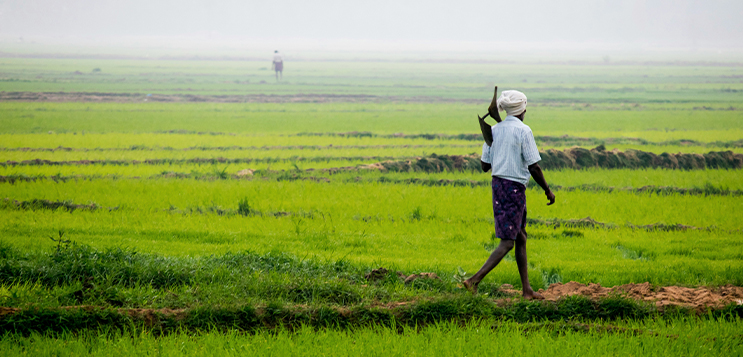
Indian farms have long supplied some of the highest-quality products to the global markets. However, with the introduction of the Green Deal by the European Union, buyers are demanding proof that shows the products are grown sustainably, chemically compliant, and traceable down to the plot.
This, unfortunately, is where India’s agricultural system is unprepared. Our farmers are open towards switching to more sustainable standards of crop production, provided they have the required support from various stakeholders. However, one significant problem stands out. Most of India’s farmers, especially the smaller ones, have been undocumented for decades. They are now being made to pay for the cost of compliance.
The European Green Deal presents a new hurdle for Indian agriculture
With the Green Deal reshaping how food and commodities move across borders, two of the most far-reaching mechanisms are the EU Deforestation Regulation (EUDR) and the Corporate Sustainability Due Diligence Directive (CSDDD). Both of these require detailed documentation at every stage of the supply chain.
For exporters operating in India’s agriculture sector, compliance now means providing verifiable details about where and how crops were cultivated. They must be able to pinpoint the exact GPS location of farms, demonstrate that the land wasn’t deforested after 2020, and present detailed records of chemical inputs and sustainability practices.
Even the farmer’s identity and land ownership documents are under scrutiny. Without this level of proof, even the best-quality Indian crops may be deemed non-compliant.
Read more: Is Europe Greenwashing Global South Into Economic Depression?
No paperwork means no access to the market
Nearly 86% of Indian farmers work on small plots of land, often under two hectares. Many of these farmers lease land informally or cultivate inherited land that lacks formal documentation. As a result, digital land records are rare. In addition, awareness of international compliance norms is even rarer. The idea of traceability, while powerful on paper, is deeply misaligned with the structural realities of Indian farming.
Indian farmers often lack access to smartphones or digital tools, making it nearly impossible to maintain traceability logs or input records. Harvest records, if maintained, are often handwritten and not standardised. Additionally, there is a limited understanding of export market expectations. To make matters worse, farmers have almost no access to third-party traceability platforms or training on how to comply with European Green Deal regulations.
Even if the farmers produce export-worthy spices, cotton, tea, or coffee, they fall short in paperwork.
Indian exporters are wary of the cost of compliance
The cost of compliance extends beyond the farm. Indian exporters and agri-businesses that ship to the EU are under immense pressure to demonstrate a clean, verifiable supply chain. Contracts with European buyers now include clauses that require full transparency, from pesticide logs to satellite-confirmed land records. A single non-compliance issue could result in port rejections, shipment losses, or terminated contracts.
As a result, many exporters are choosing to work with large, certified estates or organised farm collectives that come with built-in documentation. Smallholder-linked supply chains, lacking that traceability, are quietly being dropped. The cost of building audit-ready systems is often too high for smaller suppliers, and so the system begins to filter out those who can’t pay to stay compliant, even when their farming practices are sound.
Read more: How Genetic Engineering Can Help Indian Farmers Amidst Green Deal Pressure
Paying a high cost of compliance for sustainability
At its core, the European Green Deal is a climate action framework. It is designed to reduce emissions, protect forests, and ensure sustainable agriculture. But without pathways for equitable participation, it risks becoming an environmental regime. One that benefits only the documented and digitally enabled.
For much of the developing world, including rural India, these standards feel more like green protectionism than global sustainability.
India’s fragmented landholdings, informal leasing systems, and low digital penetration make it nearly impossible for many smallholders to keep up with the documentation race. Without access to record-keeping tools, training, or financial support, the best intentions of sustainable farming exports will ultimately favour the organised elite while punishing the marginalised.
What can be done to help Indian agriculture?
For India’s agricultural sector to remain competitive in global markets, rapid and inclusive investment in traceability infrastructure is crucial. The government’s efforts, under programs such as the Agri Stack and the Digital India Land Records Modernisation Programme (DILRMP), are a starting point. Still, their pace and scale must increase dramatically.
At the same time, the private sector must help build accessible traceability platforms in local languages, tailored to the workflows of small farmers. Farm Producer Organisations (FPOs) need financial incentives to digitise their systems.
Exporters, too, should be supported in building traceable supply chains that include small-scale farmers. Without these timely interventions, Indian agriculture risks being excluded from Europe’s sustainable trade corridors.
